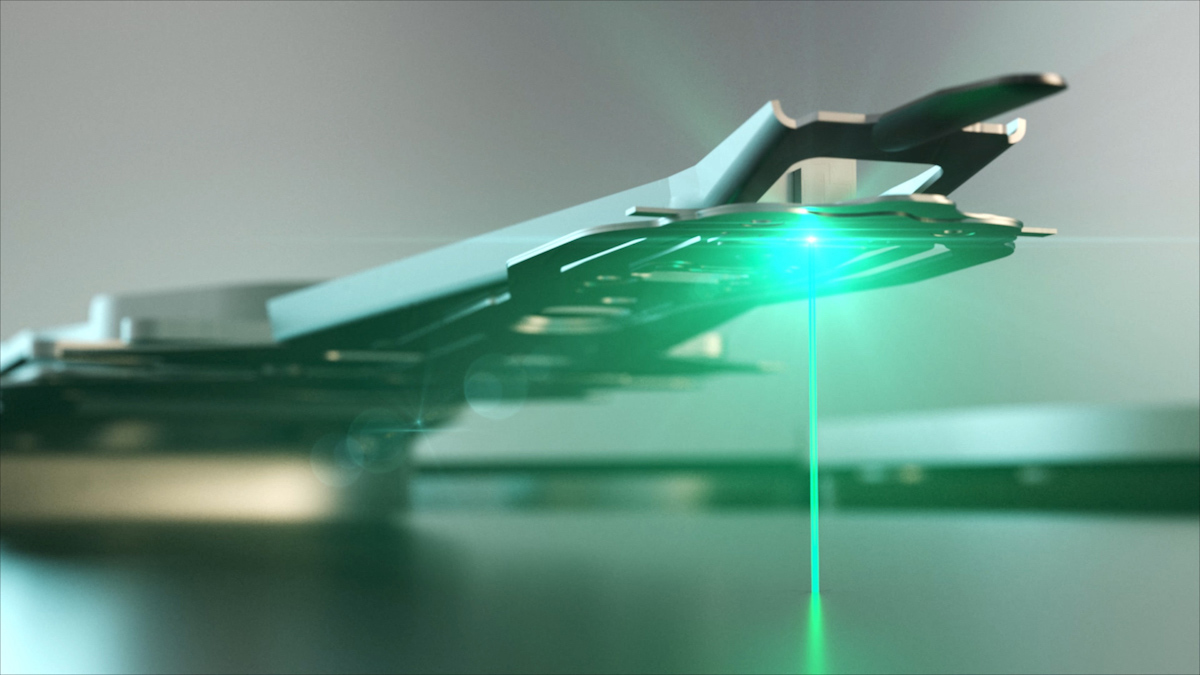Seagate claims hard drives are more environmentally friendly than SSDs
Spinning platters are allegedly the best storage method to reduce carbon emissions.

Global increases in carbon emissions are allegedly becoming a growing concern surrounding AI development. A report from Blocks and Files reveals that Seagate investigated three of the most popular data storage solutions based on carbon emission output. Out of the three options, SSDs, hard drives, and LTO tapes, hard drives were found to be the most carbon-efficient.
The three storage types were benchmarked under three categories: Embodied carbon by product, Embodied carbon per TB, and Embodied carbon per TB per year. SSDs produced the most carbon emissions, producing 4,915 kg CO², 160 CO² per TB, and 32 CO² per TB per year. LTO tapes came in second place, producing 48 kg CO², 2.66 kg CO² per TB, and <0.6 kg CO² per TB per year. Hard drives won out, producing 29.7 kg CO², <1 CO² per TB, and <0.2 CO² per TB per year.
Storage Media | Embodied Carbon by product (Kg CO²) | Embodied Carbon per TB (CO²/TB) | Embodied Carbon per TB per Year (CO²/TB/Year) |
SSD | 4,915 | 160 | 32 |
Hard Drives | 29.7 | ||
LTO Tape | 48 | 2.66 |
Concerns about carbon emissions have intensified due to the rapid growth of AI and the substantial amount of raw computing power required to run large language models. Data centers are becoming one of the most energy-intensive sectors of the digital economy, with power demand projected to rise by as much as 165% by 2030. However, some have given up on the climate conversation altogether; former Google CEO Eric Schmidt believes that it will be impossible to achieve climate goals due to a lack of organization within the industry.
Seagate's investigation reportedly concluded with three pillars for lowering carbon emissions: Increasing advances in liquid/immersion cooling and HVAC systems, a commitment to life cycle extension and circularity (through activities such as refurbishing products, and reusing products where possible), and companies sharing accountability of emissions across the entire datacenter ecosystem.
Seagate's analysis suggests hard drives still have plenty of life ahead of them, and won't be going the way of the dodo as may might have expected. Seagate is leading by example, by continuing to build more advanced hard drives to meet the demands of modern data centers. Seagate recently announced its new Mozaic 3+ hard drives, utilizing HAMR technology, featuring a 36TB offering.
Follow Tom's Hardware on Google News to get our up-to-date news, analysis, and reviews in your feeds. Make sure to click the Follow button.
Get Tom's Hardware's best news and in-depth reviews, straight to your inbox.

Aaron Klotz is a contributing writer for Tom’s Hardware, covering news related to computer hardware such as CPUs, and graphics cards.
-
JRStern Don't believe it for a femtosecond, and actually really don't care.Reply
So what exactly is the problem, first that chips use a lot of processing to be built, OK, but surely so do all the components in modern high-capacity HDDs. And I gather some of the newer SSDs run hot, even idle hot? Do they really burn more power than HDDs? I would not have thunk so. -
Notton I'm not entirely sure who this PR piece is aimed at.Reply
Data storage is a necessity in this age, so while it's nice they consider the total carbon emissions, it doesn't really matter because we can't live without it.
And it's not like SSDs, optical, and Tape can replace HDDs 1:1 right now. There is a well defined cost limit, desired performance, and data retention period between the various formats.
We can talk about carbon emissions of HDDs or SSDs if they reach cost parity (which they kind of did in the 2.5" format a few years ago).
It's almost as if they tried to compare their carbon emissions against WD and that other company... Toshiba? and it turned out they had no advantage. -
CharlesZ I suspect that the thing that makes this claim work is that it takes many SSDs to match the TB capacity of one (36TB) HDD.Reply
So, whereas one SSD is more power efficient than one HDD,
it is possible that combining many SSDs (to reach 36TB) will have a larger power (and manufacturing) requirement than one (36TB) HDD. -
thestryker The most important part I think is this (directly from the Seagate report):Reply
These numbers reflect Seagate’s analysis based on the following products:
The HDD figures are a complete estimate and the SSD figures are not only estimated, but based on a methodology which used data from system OEMs and the largest SSD in that data is a 3.84TB enterprise drive.
Linear tape-open (LTO) 9 tape drive + 1 media: LTO Ultrium
Hard drive: Seagate 30TB Mozaic 3+™
Generic data center SSD: 30.72TB
On a one to one comparison I could see where just from a pure storage standpoint HDDs could come out on top. That of course ignores all the nuance involved with storage strategies though. -
A Stoner You can tell how much total environmental damage something causes by the price you pay for it. It happens on one side of the transaction or the other. The more money that changes hands just means more activity, and activity that is not explicitly healing to nature is destructive to nature and even that which we do to make one part of nature better has to come at the expense of another part of nature.Reply -
Alvar "Miles" Udell A PR article based on third party article based on a first party report and featuring a chart that is incomplete in the one area the article is supposed to be about...There must be at least 5 good reasons TH. shouldn't have published this articleReply -
JohnyFin I do not believe any Seagate word. Looks for me like they did not show a whole picture in these calculations.Reply -
wolfferth CO2, the trace gas of life? Those 0.04%? It's essential for photosynthesis and shouldn't be mixed up with pollution for racketeering-purposeses.Reply -
lmcnabney The cost per TB for spinning rust has flatlined for the last four years. I bought a 10TB drive for offsite backup five years ago for $180. The cheapest 10TB drive right now is $200.Reply